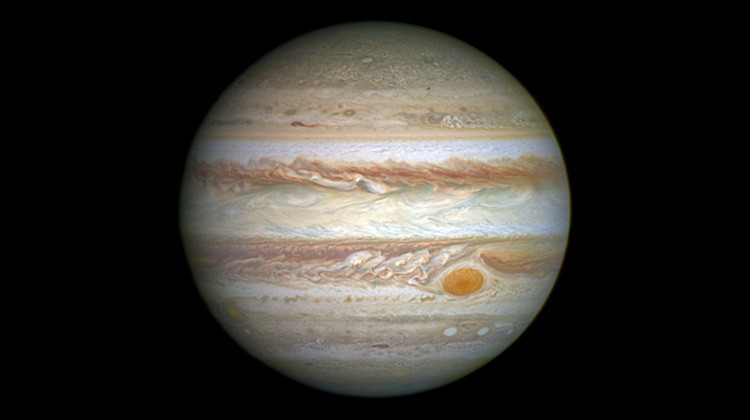Globular Cluster M22
Update: 2020-10-16
Description
While the moon is pretty to look at and easy to find, its light outshines a lot of deep sky objects. Galaxies, star clusters, nebulae… So moonless nights are what amateur astronomers live for.
One of the brightest deep sky objects, and therefore a good one to start with, is Messier 22--a globular cluster in the constellation Sagittarius.
M22 was one of the first globular clusters ever discovered. It was found by German astronomer Abraham Ihle (EEL-uh) in 1665, and later added to Charles Messier’s famous list of comet-like objects that we now know are immense, but distant and dim celestial objects. Not so dim though that today’s amateur telescopes can’t find them--especially M22. It’s one of the brightest of all globular clusters. Just about any telescope should reveal it, but you may have to look for a while before you find it. To do so, find Saturn and Jupiter--two bright points of light in the southern sky with Saturn on the left, and bright Jupiter on the right. Trace an imaginary line from Saturn to Jupiter, and continue that straight line about that same distance past Jupiter. Then with a telescope, any telescope, scan just a little further to the right and ever-so-slightly downward. When you see what looks like a fuzzy star, stop. You’ve found it.
Globular clusters are some of the best deep sky objects to start with because they’re easier to spot than galaxies and dimmer open clusters.
If you have any trouble finding Messier 22, find me on Twitter @MattPelsor for a visual guide.
One of the brightest deep sky objects, and therefore a good one to start with, is Messier 22--a globular cluster in the constellation Sagittarius.
M22 was one of the first globular clusters ever discovered. It was found by German astronomer Abraham Ihle (EEL-uh) in 1665, and later added to Charles Messier’s famous list of comet-like objects that we now know are immense, but distant and dim celestial objects. Not so dim though that today’s amateur telescopes can’t find them--especially M22. It’s one of the brightest of all globular clusters. Just about any telescope should reveal it, but you may have to look for a while before you find it. To do so, find Saturn and Jupiter--two bright points of light in the southern sky with Saturn on the left, and bright Jupiter on the right. Trace an imaginary line from Saturn to Jupiter, and continue that straight line about that same distance past Jupiter. Then with a telescope, any telescope, scan just a little further to the right and ever-so-slightly downward. When you see what looks like a fuzzy star, stop. You’ve found it.
Globular clusters are some of the best deep sky objects to start with because they’re easier to spot than galaxies and dimmer open clusters.
If you have any trouble finding Messier 22, find me on Twitter @MattPelsor for a visual guide.
Comments
Top Podcasts
The Best New Comedy Podcast Right Now – June 2024The Best News Podcast Right Now – June 2024The Best New Business Podcast Right Now – June 2024The Best New Sports Podcast Right Now – June 2024The Best New True Crime Podcast Right Now – June 2024The Best New Joe Rogan Experience Podcast Right Now – June 20The Best New Dan Bongino Show Podcast Right Now – June 20The Best New Mark Levin Podcast – June 2024
In Channel














